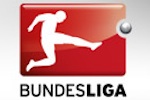The WDR: playing in the Champions’ League
 Germany: The Westdeutscher Rundfunk (WDR) in Cologne has been transmitting all ARD sports programmes in HD for some time now, including its flagship, the ‘Sportschau Bundesliga’. German Correspondent, Birgit Heidsiek, profiles the Quantel-based workflow that has seen the WDR enter the Champion’s League of European broadcasters.
Germany: The Westdeutscher Rundfunk (WDR) in Cologne has been transmitting all ARD sports programmes in HD for some time now, including its flagship, the ‘Sportschau Bundesliga’. German Correspondent, Birgit Heidsiek, profiles the Quantel-based workflow that has seen the WDR enter the Champion’s League of European broadcasters.
Smoothless upgrading to the new technology was facilitated by Quantel’s Enterprise sQ system which had been chosen due to its approved HD capability. With the native HD production of a complex program such as the ‘Sportschau’, the WDR is without any doubt one of the pioneers. The Quantel system comprising seven sQ server units, improves the production of the ‘Sportschau Bundesliga’. News flashes may be produced even at the last minute’, points out Wolfgang Piron, Project Coordinator at the WDR.
The digital production platform has a short time to air so that the footage can be edited and TXed with a very short time delay while the ingest is running. In addition to the high speed, this server-based production solution offers the instant availability of the ingested material in HighRes and LowRes and the option to have rough editing and scrutiny carried out by the editorial desk in LowRes.
The WDR has purchased the sQ system for the Bundesliga, but it is also used for news and magazine production. From Friday to Sunday the Quantel system is mainly used for sports production, implying the highest workload. With the Enterprise sQ system the WDR produces about 400 programme minutes per week for sports only.
The digital production platform used for sports consists of four sQ servers for ingest and production and three playout servers which are assigned to the studios. ‘When upgrading to HD, the WDR needed a studio capable to transmit in HD without any conversion’, explains Uwe Niepelt, System Coordinator. The renovation of the Studio B control room laid the foundations for a workflow in HD and multichannel sound. Each of the three playout servers assigned to the Studios B, C and E offers a storage capacity of 130 hours SD or 70 hours HD, respectively. Direct recording to these servers is also possible in the studio. The whole production server used to store edited stories not yet ready to go on air, has a SD capacity of 540 hours or a HD capacity of 280 hours or any combination of both, respectively.
For sports production on Saturday, the editorial desk of the WDR disposes of a special dispatcher room permitting to log the ingested games and mark the highlights in the recorded source material. The clips are opened in the sQ-View unit, and the corresponding positions are colour-marked with assigned keywords such as ‘goal’, ‘out’ or ‘offside’ and a short comment. “The metadata is entered into the Quantel system so that they cannot only be used for current highlight editing, but also be transferred into the library system,” says Stefan Hecker, Special Coordinator for network-based Production Systems and Production at the WDR. The Cache mechanisms integrated into the Quantel system did not satisfy the WDR requirements. “As our specific workflow includes screening and logging of up to nine different live lines, some system details had to be further improved,” stresses Niepelt.
Being used for news and sports production at the same time, the Quantel system at the WDR is subject to very different workloads. In sports for example, a complete game is recorded, an up to 15 minutes long story is edited and mirrored on the playout server and then played out by the playout server during 15 minutes. In news production a short transfer is ingested, compressed into a 1:30 min story and played out. ‘These are very different production requirements, but we cover them all’, as the System Coordinator outlines.
The ‘Sportschau.de’ online editorial desk has also direct access to the material in the server-based production system. The producers compose the footage in the Quantel system. sQ-Views and a sQ-Edit in the multimedia room are available to them for processing. As the WDR does not hold any internet licences of the Bundesliga games, the soccer sequences have to be cut out from the stories before they go online. The edited online stories are stored in the server. “Entering a meta date into the system automatically activates the export via QUICTools,” explains Hecker. “The videos are automatically transcoded into three web formats, uploaded to our web server via FTP and linked into the website.”
Thanks to the HD upgrade, in terms of the technical equipment the WDR is now playing in the Champions’ League of the TV broadcasters. “For the TV viewers this is a big leap forward in quality,” resumes Piron. “Although the signals are compressed in the transmission line, the high quality of the footage and the excellent compression technology result in less artefacts than with SD production.” Furthermore the artefacts are more subtle in HD material and are therefore less visible than in SD. “The TV public benefits from a distinct quality improvement to receive native HD that was recorded at the source.”
